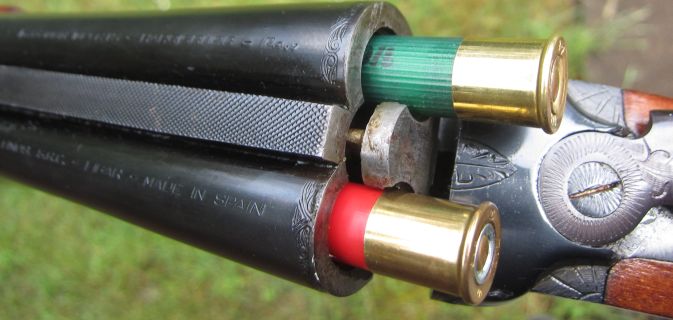Double Barrel Firearms: A Classic Platform with Timeless Appeal

By Derrick R. Stallings – HuntingOfficer.com
Double barrel firearms have long captured the imagination of gun enthusiasts, hunters, and collectors alike. With their distinctive side-by-side or over-and-under barrel configurations, these guns represent one of the most iconic platforms in firearms history. From their centuries-old origins to their continued relevance in modern shooting sports, the double barrel firearm has evolved while staying remarkably true to its roots.
A Brief History of Double Barrel Firearms
The double barrel firearm dates back to the early 18th century, with the first true examples appearing around the 1730s in Europe. At the time, flintlock technology was dominant, and the double barrel concept was born out of necessity—one shot wasn’t enough. Hunters and military users alike saw the value in having a quick follow-up shot without the long delay of reloading a muzzleloader.
By the early 19th century, the design matured with the introduction of percussion cap systems, and soon after, breech-loading mechanisms revolutionized the double barrel platform. Shotguns became the most common type of double barrel firearm, especially in Britain and the United States, where companies like Purdey, Holland & Holland, and Parker Brothers set the standard for craftsmanship and reliability.
Double rifles also gained popularity during the height of European colonialism in Africa and India, used for dangerous game hunting where a quick second shot could mean the difference between life and death.
Mechanics of the Double Barrel
Double barrel firearms come in two primary configurations: side-by-side and over-and-under.
- Side-by-Side (SxS): The traditional design, where barrels are mounted horizontally. SxS guns are generally lighter and faster to shoulder but require more skill for accurate shooting due to the wider sighting plane.
- Over-and-Under (O/U): Developed later in the 20th century, O/U guns stack barrels vertically. This offers better balance and a narrower sighting plane, making them popular in clay shooting sports like skeet and trap.
Most double barrel firearms operate using break-action mechanics. The gun hinges open at the breech, allowing the shooter to manually load or unload shells. Once closed, the gun is ready to fire—usually with a mechanical or inertia-based single or double trigger system that fires one barrel at a time.
Some models also feature selective fire, allowing the shooter to choose which barrel fires first. Safety mechanisms are often incorporated into the tang (top) of the gun, and ejectors or extractors help remove spent shells once opened.
Ammunition: What They Shoot
Double barrel firearms are typically chambered for shotgun shells, though there are double rifles that fire traditional rifle cartridges as well.
- Shotguns: The most common gauges include 12, 20, 16, 28, and .410 bore. Each gauge offers different recoil, payload, and use-case benefits. For example, 12 gauge is the most versatile, while .410 is often used for small game or beginner shooters.
- Rifles: Double rifles are usually chambered in large-caliber dangerous game cartridges, such as .470 Nitro Express, .500 NE, or .375 H&H. These are designed for thick-skinned, dangerous animals like elephants or cape buffalo.
Ammunition compatibility is critical, and most double barrels are regulated—meaning the barrels are aligned—for specific loads to ensure both barrels shoot to a common point of impact. This precision regulation process can make high-end double rifles incredibly expensive, often costing tens of thousands of dollars.
The Future of the Double Barrel Firearm
Despite the advent of semi-automatic and pump-action firearms, the double barrel platform has remained surprisingly resilient. Its simplicity, reliability, and elegance have cemented its place in the gun world.
- Modern Innovations: Today’s double barrels may feature lightweight alloys, synthetic stocks, and modular design features. Companies like Beretta, Browning, and CZ continue to push design forward while maintaining the core mechanics.
- Niche Popularity: Double barrels remain the gold standard in upland bird hunting and competitive clay shooting. Their limited capacity is seen not as a disadvantage but as a nod to tradition, discipline, and marksmanship.
- Self-Defense Use: Short-barreled coach guns—often with external hammers—have found use in home defense and cowboy action shooting sports. Though limited in capacity, they’re incredibly easy to operate and ultra-reliable.
- Collector and Heirloom Value: Many double barrel firearms, especially handcrafted models, are passed down through generations. Some antique examples are worth as much as luxury vehicles and continue to be sought after by collectors.
Conclusion
Double barrel firearms are more than just tools—they’re symbols of craftsmanship, heritage, and shooting tradition. Whether in the fields of Europe, the African bush, or a modern skeet range, the double barrel stands as a testament to the idea that sometimes, simpler is better. With a legacy built on reliability, elegance, and deadly effectiveness, there’s no doubt the double barrel firearm will continue to hold a place of honor in the world of shooting sports for generations to come.
Discover more from HuntingOfficer
Subscribe to get the latest posts sent to your email.
